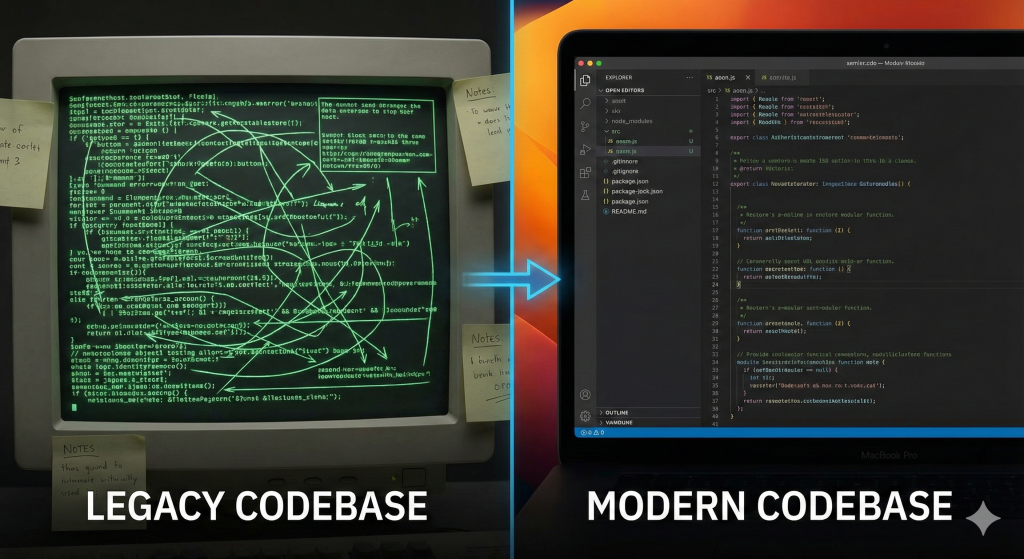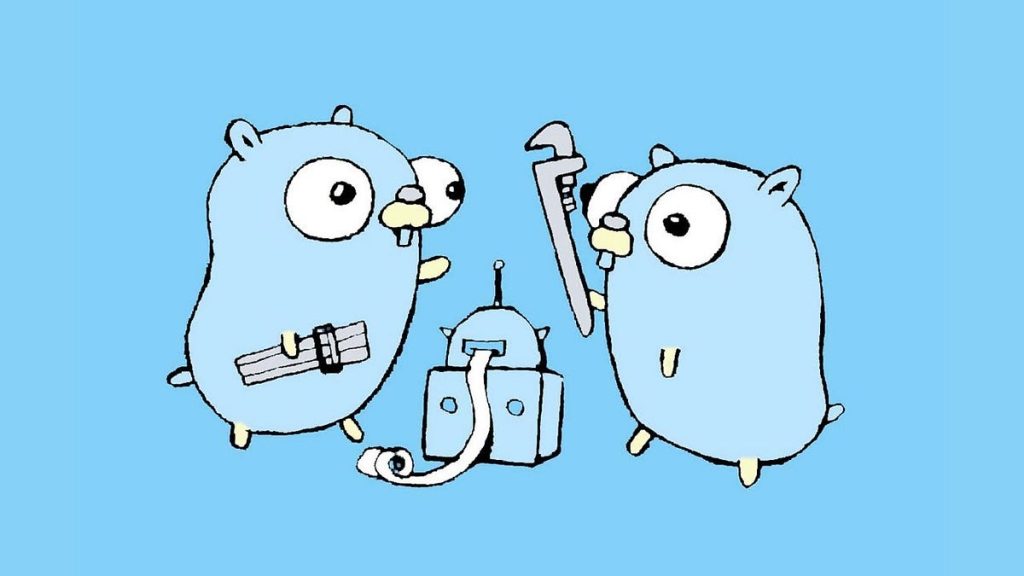Introduction to Microservices Architecture
Microservices architecture represents a modern approach to designing large, complex systems as a collection of small, independent, loosely coupled services. Each service focuses on a specific business capability, allowing for enhanced scalability, ease of maintenance, and rapid deployment cycles. As organizations shift towards microservices, the need to balance independent development with a cohesive ecosystem becomes paramount. This architectural style encourages developers to break down monolithic systems into manageable parts that can scale independently and be updated without causing system-wide disruptions.
Understanding and embracing microservices requires a robust strategy that addresses challenges such as inter-service communication, data consistency, and service orchestration. In this post, we not only introduce the basics of microservices architecture but also dive deep into the specific ways Go can serve as an efficient platform for building scalable and high-performance microservices.
Why Choose Go for Microservices?
Go, often known as Golang, is a statically typed, compiled programming language recognized for its simplicity, efficiency, and powerful support for concurrency. It is an excellent choice for building microservices due to several fundamental reasons:
- Performance and Efficiency: Go compiles directly to machine code, delivering impressive runtime performance essential for handling high loads.
- Concurrency Model: Go’s goroutines and channels allow developers to manage concurrent tasks with minimal overhead, making it ideal for building systems that handle multiple simultaneous operations.
- Robust Standard Library: The language comes equipped with a rich standard library for everything from HTTP servers to cryptographic functions, reducing dependency on third-party packages and speeding up development.
- Simplicity and Maintainability: The language’s simple syntax and strong emphasis on readability facilitate the development and maintainability of complex applications.
These characteristics have made Go a favorite among developers seeking to build microservices that are both robust and scalable, capable of thriving in dynamic, fast-paced development environments.
Design Patterns for Scalable Microservices
Implementing design patterns is pivotal when designing scalable microservices. They provide proven solutions to common architectural challenges and foster a clean separation of concerns. Here are some key design patterns particularly relevant for Go microservices:
Domain-Driven Design (DDD)
Domain-Driven Design revolves around structuring microservices around discrete business domains. For example, you might have a UserService handle all user-related operations and an OrderService managing order processing. This pattern aids in encapsulating business logic within each microservice, thus promoting modularity and scalability. More details can be found in the article by Design Patterns for Building Scalable Microservices in Go.
Repository Pattern
The Repository Pattern abstracts the data access layer from business logic. In Go, developers define repository interfaces that can be implemented with different database adapters. This abstraction makes switching databases or data sources easier while ensuring that business logic remains unaffected by underlying storage changes. Read more about this at ferilukmansyah.dev.
Factory Pattern
The Factory Pattern centralizes object creation, ensuring a consistent way of instantiating services or clients. This is particularly beneficial in a microservices context where multiple instances of various services need to be created reliably and efficiently.
Service Layer Pattern
Encapsulating business logic within a dedicated service layer helps maintain a clear separation between request handling (controllers) and business processes. This not only keeps controllers slim but also simplifies testing and maintenance. More insights on this are available at Design Patterns for Building Scalable Microservices in Go.
Circuit Breaker Pattern
Implementing the Circuit Breaker Pattern is crucial for the resiliency of microservices. By detecting when a service is failing, it prevents cascading failures across the system. This allows the system to gracefully degrade service while underlying issues are being resolved. Atlassian offers an extensive look into this topic in Atlassian’s Microservices Design Patterns.
Event-Driven Architecture
An event-driven approach minimizes tight couplings between microservices. By leveraging asynchronous communication, such as the publish-subscribe model, microservices can efficiently react to events and system changes. This design is well outlined in the research discussed at Ksolves.
API Gateway Pattern
The API Gateway Pattern acts as a single entry point for all client requests. It not only routes requests to underlying microservices but also handles cross-cutting concerns like authentication, rate limiting, and logging. For a detailed overview of this pattern, check out Codefresh’s guide on microservices design patterns.
Sidecar Pattern
This pattern involves pairing auxiliary components besides the main microservices to offload tasks such as logging, monitoring, and service discovery. The Sidecar Pattern helps maintain the purity of your core service code while addressing necessary operational concerns, as discussed on GeeksforGeeks.
Database Per Service
Assigning each microservice its own dedicated database reduces interdependencies and allows for independent scaling and management. This strategy provides both high cohesion within the service and loose coupling between services. Further reading is available at Computer.org.
Concurrency in Go: Making the Most of Goroutines
Go’s inherent support for concurrency is one of its most significant advantages when building microservices. Goroutines are lightweight threads managed by the Go runtime, allowing applications to perform multiple tasks concurrently without incurring much overhead. Here are some key points about concurrency in Go:
- Efficient Task Handling: Goroutines enable concurrent processing of tasks such as handling incoming requests, making network calls, or processing background tasks.
- Communication via Channels: Channels provide a safe way to share data between goroutines, reducing the risk of race conditions.
- Simplicity in Syntax: The language is designed to make concurrent programming intuitive, helping developers write clear, maintainable code that leverages parallel execution.
Utilizing these concurrency tools effectively can significantly enhance the performance and responsiveness of your microservices, making it easier to handle high volumes of requests and real-time data processing.
Managing Communication Between Microservices
Inter-service communication is the backbone of a successful microservices architecture. Effective strategies for managing this communication include:
- RESTful APIs: Designing clear, well-documented RESTful endpoints allows seamless communication between services.
- Message Queues: Systems such as RabbitMQ or Kafka can facilitate asynchronous communication, reducing coupling and improving resilience.
- gRPC: Leveraging gRPC for communication can provide performance benefits through efficient binary protocols and support for bidirectional streaming.
Structuring communication with these methods ensures that services remain decoupled yet cohesive, enabling easier debugging, testing, and scaling of individual components.
Implementing Resiliency and Fault Tolerance
Resiliency and fault tolerance are essential for any system that must remain operational under stress. Implementing best practices in this area involves:
- Retries and Timeouts: Automatically retry failed requests with appropriate timeouts help manage transient errors without manual intervention.
- Circuit Breakers: Prevent cascading failures by stopping requests to failing services, as previously discussed in the Circuit Breaker Pattern.
- Failover Mechanisms: Design your system to switch to backup services or alternative strategies when a particular microservice fails.
- Graceful Degradation: Ensure that if parts of your system fail, the overall service can still perform at a reduced capacity rather than collapsing entirely.
By embedding these fault tolerance mechanisms into your microservices, you can maintain high availability and consistent performance even in adverse conditions.
Deploying and Scaling with Containers
Containerization has revolutionized the way we deploy and scale microservices. By packaging each microservice in a container, you achieve:
- Consistency Across Environments: Containers ensure that applications run the same way across development, testing, and production environments.
- Scalability: Platforms like Kubernetes and Docker Swarm can easily orchestrate and manage containerized services, providing dynamic scaling and load balancing.
- Isolation: Each container runs in its isolated environment, reducing conflicts between dependencies and enhancing security.
Adopting containerization not only simplifies deployment but also provides the flexibility needed to scale individual services based on demand.
Monitoring and Logging Best Practices
Effective monitoring and logging are critical in a microservices ecosystem. They enable developers to identify and resolve issues quickly. Best practices include:
- Centralized Logging: Aggregate logs from all microservices into a central platform to facilitate quick troubleshooting and analysis.
- Distributed Tracing: Implement tools such as Jaeger or Zipkin to trace requests across multiple services, providing visibility into performance bottlenecks.
- Health Checks and Metrics: Regularly monitor the health of each service using dedicated endpoints and gather performance metrics to anticipate issues before they impact users.
Comprehensive observability, including logging, monitoring, and tracing, is essential for maintaining the resilience of a complex microservices environment.
Case Study: Successfully Implementing Microservices in Go
Consider a real-world scenario where a leading streaming service needed to revamp its monolithic architecture to better handle skyrocketing user demand. The organization transitioned to a microservices architecture built with Go. Here are some highlights of their experience:
- Performance Gains: By leveraging Go’s concurrency features, the service experienced significant improvements in handling concurrent user requests.
- Decoupling of Services: Each service was designed using principles such as DDD and the Repository Pattern, leading to easier maintenance and faster feature rollouts.
- Resiliency: Implementing the Circuit Breaker and related fault tolerance measures ensured that localized failures did not cause system-wide outages.
- Scalability Through Containerization: Deploying microservices via Docker containers orchestrated by Kubernetes allowed dynamic scaling based on demand fluctuations.
This case study illustrates that by integrating proven design patterns and best practices, Go microservices can excel under high load and rapidly changing business requirements.
Frequently Asked Questions (FAQ)
Q: Why is Go particularly well-suited for microservices?
A: Go offers efficient concurrency, a lean standard library, and excellent performance. These characteristics make it ideal for handling the multiple, simultaneous operations required in a microservices architecture.
Q: What are the key design patterns to consider when designing microservices in Go?
A: Essential design patterns include Domain-Driven Design, Repository Pattern, Factory Pattern, Service Layer Pattern, Circuit Breaker Pattern, Event-Driven Architecture, API Gateway Pattern, Sidecar Pattern, and Database Per Service. Each pattern addresses specific challenges and promotes a scalable microservices design.
Q: How can I ensure my microservices are resilient and fault-tolerant?
A: Implementing strategies such as retries, circuit breakers, failover mechanisms, and graceful degradation can help maintain system stability during service failures.
Q: What role does containerization play in microservices deployment?
A: Containers provide a consistent environment across various stages of deployment, allow rapid scaling, and isolate services, thus simplifying deployments and enhancing reliability.
Conclusion: Best Practices for Future-Proof Microservices
Building scalable and maintainable microservices using Go is both an art and a science. By leveraging Go’s performance, robust concurrency model, and simplicity, developers can create services that meet modern high-demand requirements. Integrating established design patterns—ranging from DDD to the Circuit Breaker Pattern—ensures that each microservice is resilient, maintainable, and capable of independent scaling.
The integration of containerization, efficient inter-service communication, and advanced monitoring further solidify the microservices ecosystem, making it easier to adapt to market changes and emerging technologies. As the microservices architecture evolves, continuously incorporating best practices and new insights will be paramount to building future-proof systems.
By embracing the strategies discussed in this post and drawing from real-world examples, you can be well on your way to constructing high-performance, scalable, and resilient microservices with Go.



